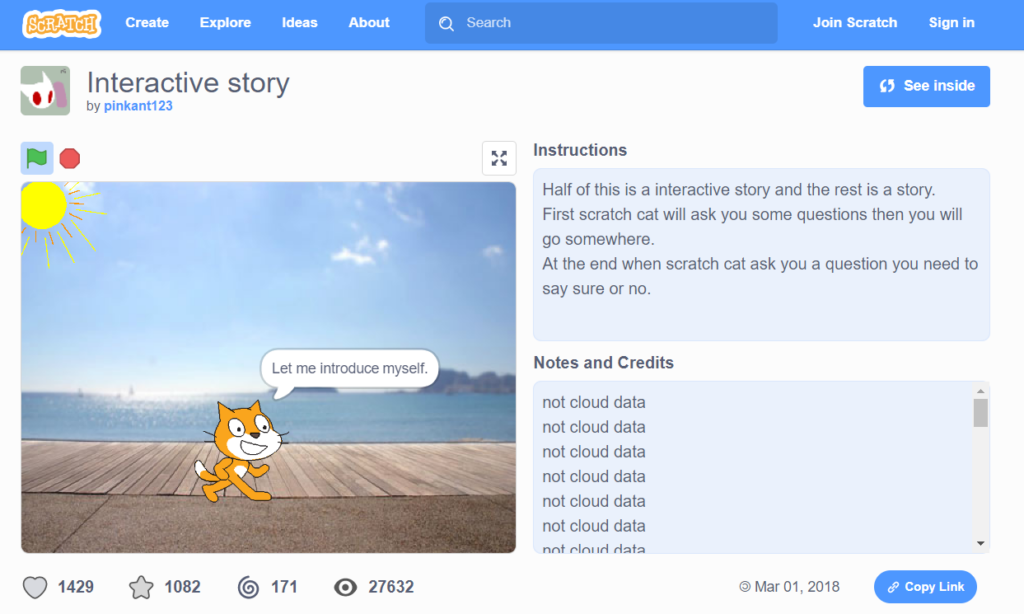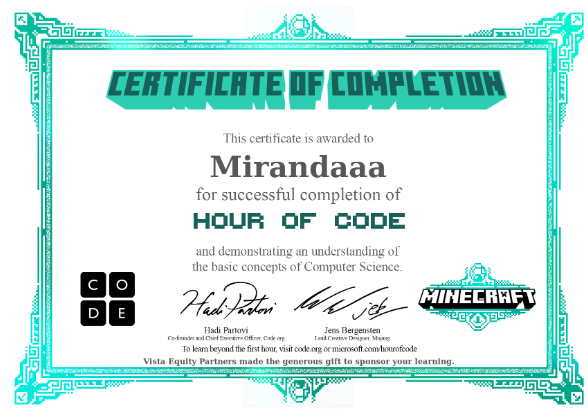This week we were introduced to a variety of coding games that can be used for fun or in educational settings. First, we started with Scratch games. I tried out a few of them and felt as though they were very static in their gameplay whereby they only had one goal and did not extend into further levels or exploration. In terms of possibly using this website as a tool in my future classroom, I am learning towards the side of “probably not”.

For example, Interactive Story only required the used to fill in a few text answers such as your name and age. From there, the game “played itself” and finished within a minute. I did not see any learning opportunity from this game, nor for most of the Scratch games.
However, one option of a Scratch game was called Equity and Equality and no matter how much I played around with this game, I could not even bypass the first step. There was definitely a drastic divide between “Interactive Story” and “equity and Equality”.
Following our warm-up activities of Scratch, we migrated into Hour Of Code which is a website that incorporates hundreds of coding tutorials for students. I found this website extremely engaging and beneficial for students and definitely would be one I keep in my teaching back pocket. Users are able to choose from a variety of topics or familiar games and then follow a step-by-step tutorial that is consisted by stages. Users are unable to move to the next level until they have accurately completed their current stage.

For my Hour of Code activity, I opted for Minecraft Hour of Code and played the “Minecraft Adventurer” mode. I personally found this tutorial really fun and there were components that were challenging. I had thought I accurately planned my coding sequence but sometimes I would have added an extra “move forward” or had observed Steve’s direction incorrectly. This would be a great tool for students to practice problem-solving and even math.
Computational thinking definitely helps students become better problem-solvers. While computational thinking is geared to mathematics, Kaitlyn Siu, author of the article “What is Computational Thinking” states “When children learn computational thinking skills, it helps them to develop skills important for not only STEM subjects, but also across the social sciences and language arts.” The process of computational thinking is the breakdown of a complex idea into smaller and relatable components to develop understanding. This is directly related to problem-solving as in order to problem-solve, one must look at all the small details and understand how they relate to each other in order to find the answer. Ultimately, the mental ability to use computational thinking extends into the student’s future studies, and real-life situations. It is a tool that should be taught and encouraged in schools because it would allow for more creative and logical thinking.
13 March 2023 at 8:30 pm
Hi Miranda, this is a great critical analysis of coding and computational thinking. I agree the scratch interactive story left little room for the student to learn, however, I have used scratch in the past to create games and stories which were awesome learning opportunities. This really prompts me to consider how I would use coding in my future classroom.